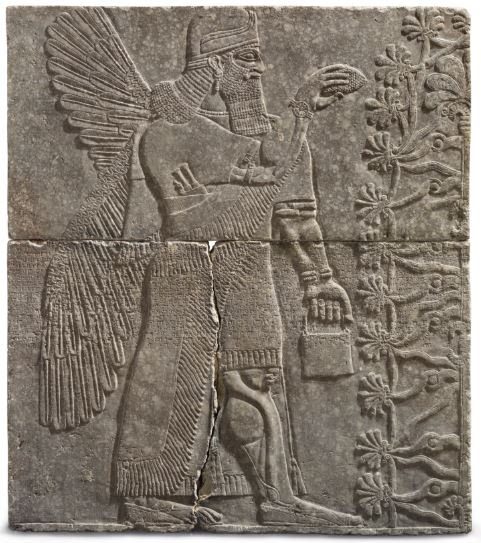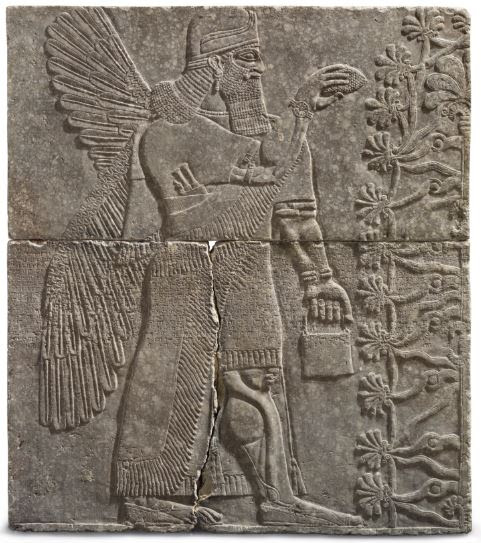[ad_1]

Relief of a Winged Genius from the Palace of Ashurnasirpal II, ca. 9th-century BCE, gypsum.
COURTESY CHRISTIE’S
A 3,000-year-old Assyrian relief featuring a figure known as the Winged Genius will go to auction at a Christie’s antiquities sale in New York on October 31. The Virginia Theological Seminary in Alexandria is selling the work, which is estimated to go for between $10 million and $15 million, to underwrite a scholarship fund.
The gypsum relief is over seven feet tall, and it once adorned the walls of the Northwest Palace of King Ashurnasirpal II at Nimrud in what is now Iraq. The figure depicted in the stone, a deity known as Apkallu, holds a bucket and a cone-shaped object that represent fertility and protection for the king.
Acquired in Mosul in 1859 by an American missionary named Henri Byron Haskell, the relief is one of the earliest ancient artworks sent to the United States. Haskell bought the work for $75 from English archaeologist Sir Austen Henry Layard, who excavated the royal palace at Nimrud—the price tag included fees for shipping the relief to Virginia. The work has been housed at the Virginia Theological Seminary since 1860. Haskell sent five additional objects to his alma mater, Bowdoin College in Maine; one of them is currently part of the Metropolitan Museum of Art’s collection.
A work known as the Canford School relief, which sold in 1994 for nearly $12 million at Christie’s London branch, remains the most expensive Assyrian relief sold at auction. If the Virginia Theological Seminary relief sells for within the high end of its estimate, it has the potential to set a new record.
G. Max Bernheimer, international department head of antiquities at the auction house, said in a statement, “This Assyrian relief is without question the most exquisite to come to the market in more than a generation, in terms of the style, condition, and subject.”
[ad_2]
Source link

